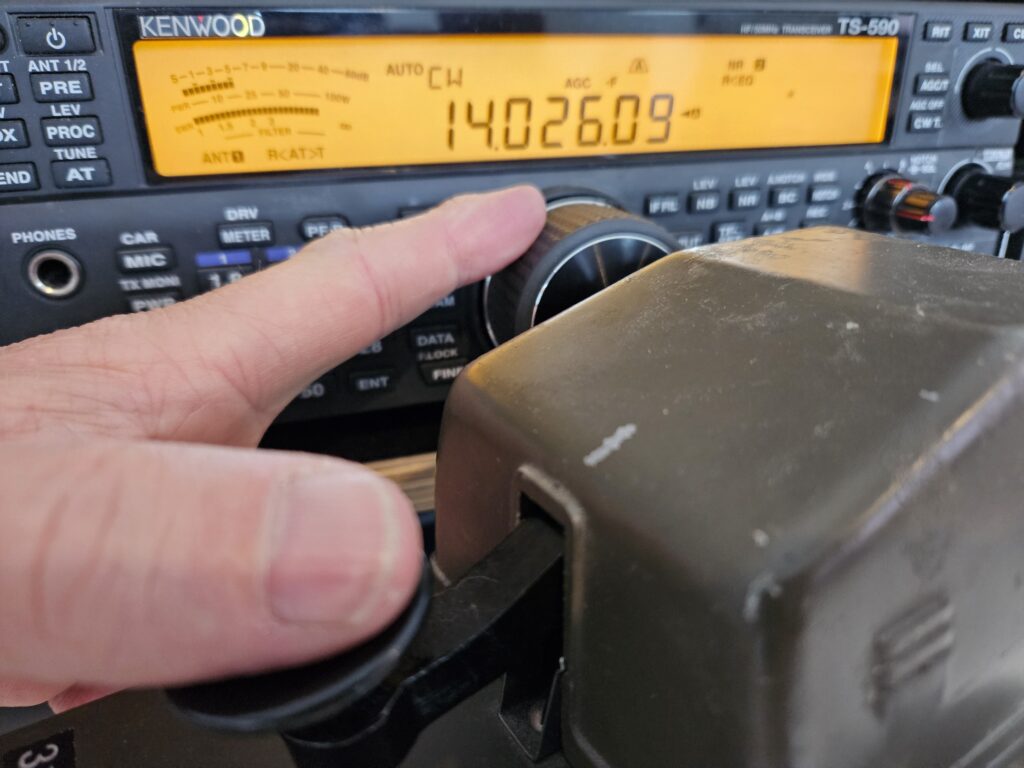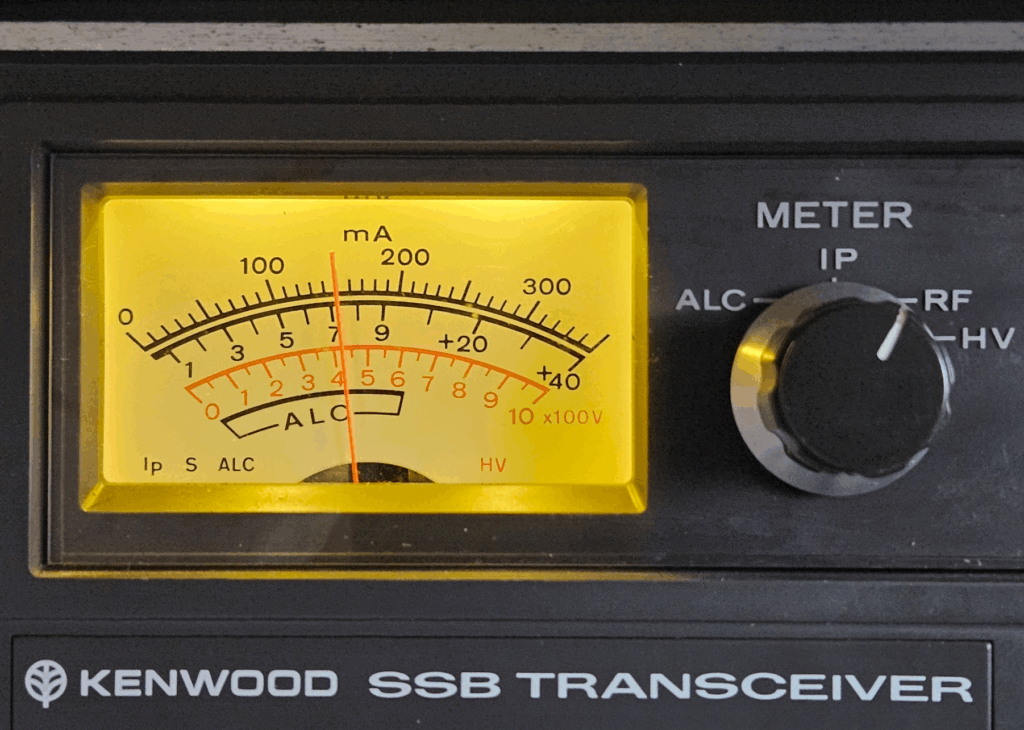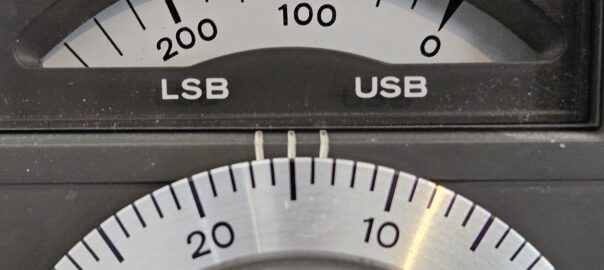We’ve all heard the term “zero-beat”. “Please zero-beat to me”, or “when listening to two stations that are zero-beat, I don’t know who’s who” or “to bust the pile-up, make sure you don’t zero-beat”. In modern parlance, people just mean “exactly match the frequency”. To “zero-beat” however does refer to a specific technique with some interesting physics behind it.
Frequency mixing? Again?
Believe it or not, we’re back to discussing frequency mixing. This time however we’ll be exploring it in the audio frequency domain. While the physics are the same as RF, we’ll be examining the results in the time domain.
Let’s start with two frequencies, call them fB and fR (blue and red). They seem about the same don’t they? In fact, fB is higher than fR, but you’ll have to take my word for it.

To improve clarity, let’s overlay them. They’re not mixed yet, just displayed together.

It should now be obvious that they’re not the same frequency, and as such, at times the waveforms are perfectly in phase, and at other times, they’re out of phase by 180 deg. with the cycle repeating.
Here’s the interesting physics: when frequencies are mixed, they’re summed, in-phase frequencies are added, and out of phase frequencies subtracted. Mixing the above wave forms then results in a new waveform thus:

Comparing the overlayed and mixed (summed) waveforms, observe that in-phase periods result in a doubling of the amplitude (2&2=4, -2&-2=-4), whilst out of phase have cancelled each other out (2&-2=0). Imagine listening to that waveform. It would be a pulsing, or “beating” sound. You now know what the “beat” in zero-beat means.
Let’s see what happens when we reduce the difference by increasing fR.

Observe that the cycles between 0 and 180 deg. phase offsets have gotten a lot longer with less beating. If we continued to raise fR to the same frequency as fB, the waveforms would *align, with no beating, or… wait for it… zero-beating.

* Note that the phase difference between the two waves is immaterial; the level will be affected, but the beating will still be gone.
How do we Zero-Beat a receiver?
We’ve learned that we need two signals to zero-beat. A radio signal is one, so where does the other come from? We have two choices, the radio’s side tone, and the internal local oscillator.
Side-tone Zero-Beat
Set your mode to CW, configured such that your key activates the sidetone without transmitting. Depending on your radio, this may be labelled “VOX” or “Break-In”.
Now with your key depressed you should hear the side-tone and the target signal at the same time. As you tune to within about 30 Hz, you should hear the tones beating against each other, getting slower and slower until… congratulations, you’re zero-beat.

There is however a limitation with side-tone zero-beat. For it to work your side-tone must be the exact pitch of your radio’s CW tone. Whilst not a problem with modern rigs, older analogue radios often suffer misalignment between the separate side-tone and RF oscillators. Fortunately, radios with an analogue RF meter have another trick up their sleeves.
Local Oscillator Zero-Beat
The frequency your radio generates for demodulation can also be used to beat against.
Setup for receive is straight forward, however if you want your transmitted signal to also be zero-beat, you need to understand which modes on your radio use the same local oscillator (LO) frequency for receive and transmit; generally, LSB, USB, AM. Many old valve radios also have a Tune mode, which often uses the CW TX LO for transmit and receive.
With the mode selected, watch the RF meter as you tune towards the target signal. Again, when you get to within about 30 Hz, you should see the needle start wobbling back and forth as the signals start beating against one another. Continue tuning until the beating stops.

In reality, you’d need the steady hands of a surgeon to find the perfect zero-beat on older rigs like the TS-520s, where each 1 deg. of VFO rotation equates to about 280 Hz!
Using zero-beat for tuning
Now before you get too excited and vow to zero beat your CW contacts from now on, let me offer a couple of practical considerations.
- It’s hard to detect beating against a CW signal, as the dits and dahs are just too brief.
- Being a little off from your partner actually makes for more pleasant listening for third parties, as it’s easier to determine who’s who. And in pileup situations, being zero-beat with the target station is a terrible strategy.
So what use is it then? Well, it’s a great way to calibrate older radios where the dial frequently needs a tweak or verify your radio’s displayed frequency without a frequency counter. Additionally, using your sidetone to get close to another station, even if not technically zero-beating, is a simple method to get in the ballpark quickly.
Of voice boxes and trains
A parting gift for you: the next time you’re on the train between Sydney city and the airport, try and zero-beat your voice against the train note. It’s fun because you can actually get quite loud without anyone noticing, and if someone does look at you oddly, just gesture at the nearest youth wearing headphones with a commiserating tut-tut. Such fun!
Lance
October 2025
